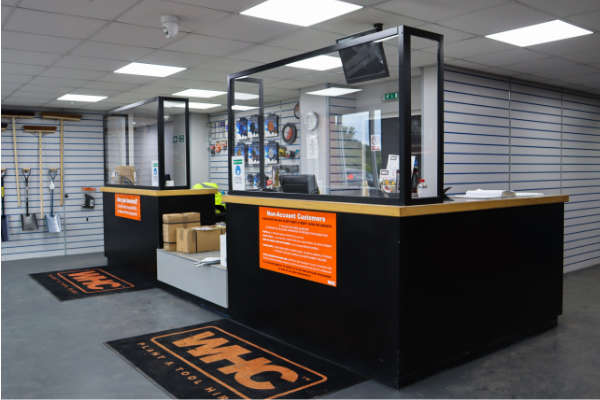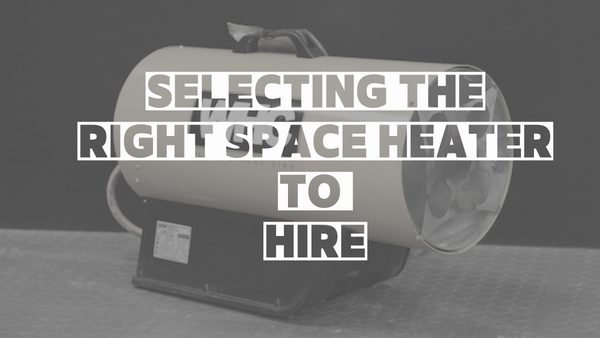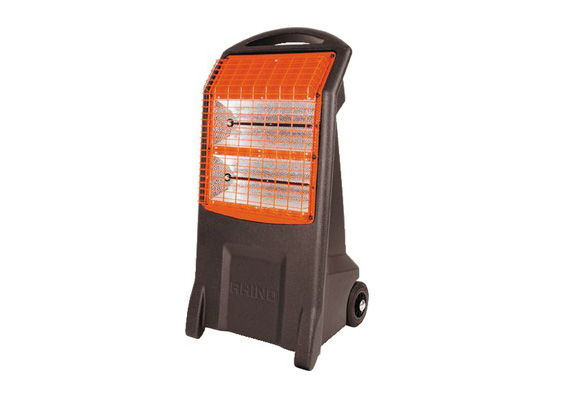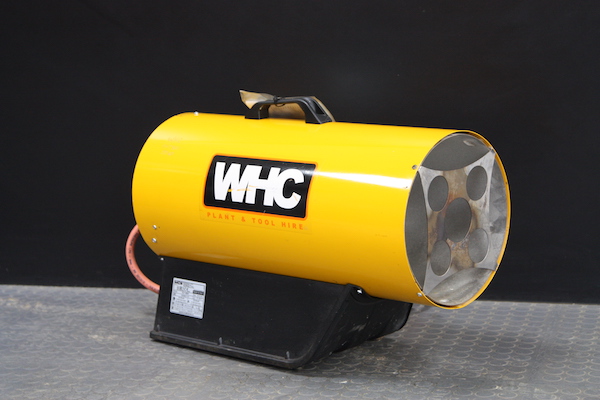Tips For Selecting The Right Size Space Heater To Hire
We are all quite accustomed to it, and with operating in the UK, we certainly can’t hide from it most of the year. That’s right, the cold. Working in the cold can be a traitress task for anyone, serving long-term health implications if adequate care is not taken. If you work in an office, building/ construction site or operate outdoor events, ensuring that you, your team, and/or guests remain well-heated is important. Which begs the question? How do you choose the right size space heater? In this article, we are going to cover a range of topics to do with space heaters to help you get started.
What is a space heater?
A space heater is a device that is specifically designed to provide effective heat to warm up a room using different types of power sources. Space heaters are used commercially and residentially by an array of different types of people. You are sure to find a space heater in most modern buildings these days. No matter what industry, there is normally a space heater involved.
Space heaters are not designed to heat connected rooms like a central heating system, therefore this is something you will need to factor in when you are considering hiring one. Different types of heaters emit an array of output levels, some are fixed, whereas some can be adjusted. Knowing your space dimensions is key, but first, let’s look at the types of heaters available.
Types of heaters on the market
There can be several limiting factors to using a space heater. This can be such as access to power, flammable materials or even size of space. To help you understand what type of heater can be best suited, let’s look into what is available on the market to hire:
Ceramic Space Heaters

Ceramic space heaters can be very convenient and inexpensive. They consist of ceramic internal plates which are warmed by electricity. From here air is heated and distributed by an assisting fan that radiates the heat outward in the direction it is pointing.
Pros
- Lightweight and portable.
- Convective fan ceramic fans heat room very quickly.
- Continues giving off heat even when shut off.
Cons
- Requires well-insulted areas to hold heat in.
- Can be expensive to run depending on your output.
Oiled-filled space heaters

These heaters work in almost the same way as a ceramic heater – just replace the ceramic plates with oil.
When electricity passes through it, the oil inside the heater heats up. It eventually becomes hot enough to heat the internal metal rods. In effect, these rods heat the surrounding air and spread it through the natural airflow (convection currents) in the room.
And there’s no need for refilling – the heater keeps reusing the same oil. Unfortunately, though, oil-filled heaters can’t use fans – they only use convection currents to heat the room’s air.
Pros
- Works quietly
- Relatively safer as no hot elements are exposed
- Keeps the room warm for a long time
Cons:
- Takes longer to heat a room
- Heavier than other kinds of space heaters
Infrared Space Heaters
Infrared heaters offer a different type of heat output. Unlike ceramic or oil-powered heaters that emit heat from the heater itself, infrared works differently. Infrared heaters work similarly to how we receive heat from the sun.
The infrared electromagnetic waves heat objects or nearby objects. They offer direct and instant heat to a focused area. They achieve this through vibrating molecules in the air with the help of a quartz element inside.
Pros
- Not Noisy
- Instant heat
- Energy efficient
Cons
- Very hot exterior casing
- Can be an unintentional fire hazard
Propane Space Heaters
Propane heaters offer another alternative space heating method. They do not use oil or electricity like some of the previous models we have looked at. Instead, they use liquid propane.
Propane heaters use their combustible fuel to heat areas most commonly by infrared. However, there are ceramic fan-assisted models available. Since they do not require electricity, they are extremely portable.
Pros
- Very portable
- Fast heating
- Less expensive than electric heaters
Cons
- Requires refillable gas bottles
- May require venting
Calculate the Cost to run a space heater per hour
Calculating the cost to run a space heater is a sensible decision, especially if you are working to a budget. Working to a budget is not always the case, however, knowing the cost to heat a certain room size can make a massive difference in the long run. So, how do you select the right size space heater for you?
First, you need to find the area of the room or space you are looking to heat.
You do this by multiplying the length by the width of the room you are working with.
An example of this would be as follows: 2mx3m= 6m2
Once we know the dimensions of the area we are working with, we can apply a formula to the equation to find the optimum level of output required to heat the room.
If we continue to work in metres, the recommended amount of wattage per square metre is 111. Therefore, to complete our formula:
Cubic M x 111 = Wattage output required.
Eg: 6×111 = 666 watts to heat the space required.
If required, we can also turn this into Btu’s (British Thermal Units).
Watts x 3.4
Eg: 666 watts x 3.4 = 2264.40 Btu’s
The same formula can be applied in sq feet instead if required. However, you need to multiply your square footage by 10 to achieve the wattage output required to heat the space. This again can then be converted into BTU’s by multiplying by 3.4 if needed.
Where to position a space heater
Like all electrical or potentially dangerous appliances, the positioning of a space heater is important to prevent accidents from occurring. When choosing a location, you should keep the following in mind:
Position
Ensure that you are positioning your heater in the same room you wish to heat, unlike central heating, space heaters are designed to heat the room they are positioned in. Therefore, do not expect them to offer much assistance to neighbouring rooms.
Make sure that the heater is pointing in the correct direction and there is no obstruction in or directly behind it.
Moisture
Ensure that your space heater is clear of any dampness or leakages. This can cause mechanical issues with the space heater, as well as become hazardous to operators or people in the near facility. Always stick to a dry place away from spills or potentially hazardous leaks.
Walls
Always ensure that when using a space heater that none of its vents are covered. Placing a heater against a wall can be extremely hazardous, the venting from the machine can cause walls to burn and potentially become hazardous. The same applies to any other covering on a space heater.
Laws around heat in a workplace

Is it law to provide heat for staff in a workplace?? Well according to current guidelines…
“Temperatures in the indoor workplace are covered by the Workplace (Health, Safety and Welfare) Regulations 1992, which place a legal obligation on employers to provide a ‘reasonable’ temperature in the workplace” (hse.gov.uk)
What do we classify as reasonable temperatures?
According to current government guidelines 2022, the minimum working indoor temperature is 16 degrees Celsius. However, if you are working outside undertaking physical work, the minimum working temperature is 13 degrees Celsius. Below this, the employer has a duty to determine what reasonable comfort will be in the particular circumstances.
Note to employers:
“These temperatures are not absolute legal requirements” (hse.gov.uk)
How much will it cost to heat an office for the day?
If your planning on hiring a space heater, then you are going to want to know the additional operational costs.
How much is it going to cost to run?? There are a number of various factors that will increase or decrease the amount of energy required to heat a space.
According to the Department for Business, Energy & Industrial Strategy (BEIS), the average cost of electricity across all regions and suppliers in 2021 was 17.2p/kWh.
Electric
By applying what we already know and using an electric ceramic space heater. An office that measures 4m by 5m will cost the following:
4m x 5m office = 20m2 = 2220 watts required. = 2.22 kWh
2.22 x 0.1702p = 0.38p/hr to power. For 8 hours a day multiply by 8. = £3.07 per office 8-hour day.
Gas
Gas space heaters generally come in a few different options burning either propane or butane. Propane offers 14 kWh per 1kg unit, whereas butane offers 20 kWh per 1kg unit. But as you may or may not know, gas like these examples must be purchased in addition to hiring a space heater. This may incur further additional charges for bottle rental etc. Nevertheless, if you are looking to heat the same office space of 4m x 5m the following will apply:
Example: 4m x 5m = 20m2 = 2220 watts required = 2.22 kWh
Propane is estimated output 17p per kWh based on 13kg bottle
Butane is estimated output 20p per kWh based on 15kg bottle
Propane Space heater = 0.17 x 2.22 = 0.38p per hour. (£3.04 for 8 hours)
Butane Space heater =0.20 x 2.22 = 0.44p per hour. (£3.52 for 8 hours)
Where to hire a space heater in UK

WHC Hire Services have been supplying space heaters to businesses, trade and the general public for over 25 years. With regular investments into the quality of our ranges, we are able to bring customers some of the most energy-efficient equipment available on the market. With a number of different heating options, we are sure to have a safe and budget-friendly solution to help. Speak to one of our hire team experts who will be able to discuss your heating solutions today on 01684377977 or email hire@whchire.com.



